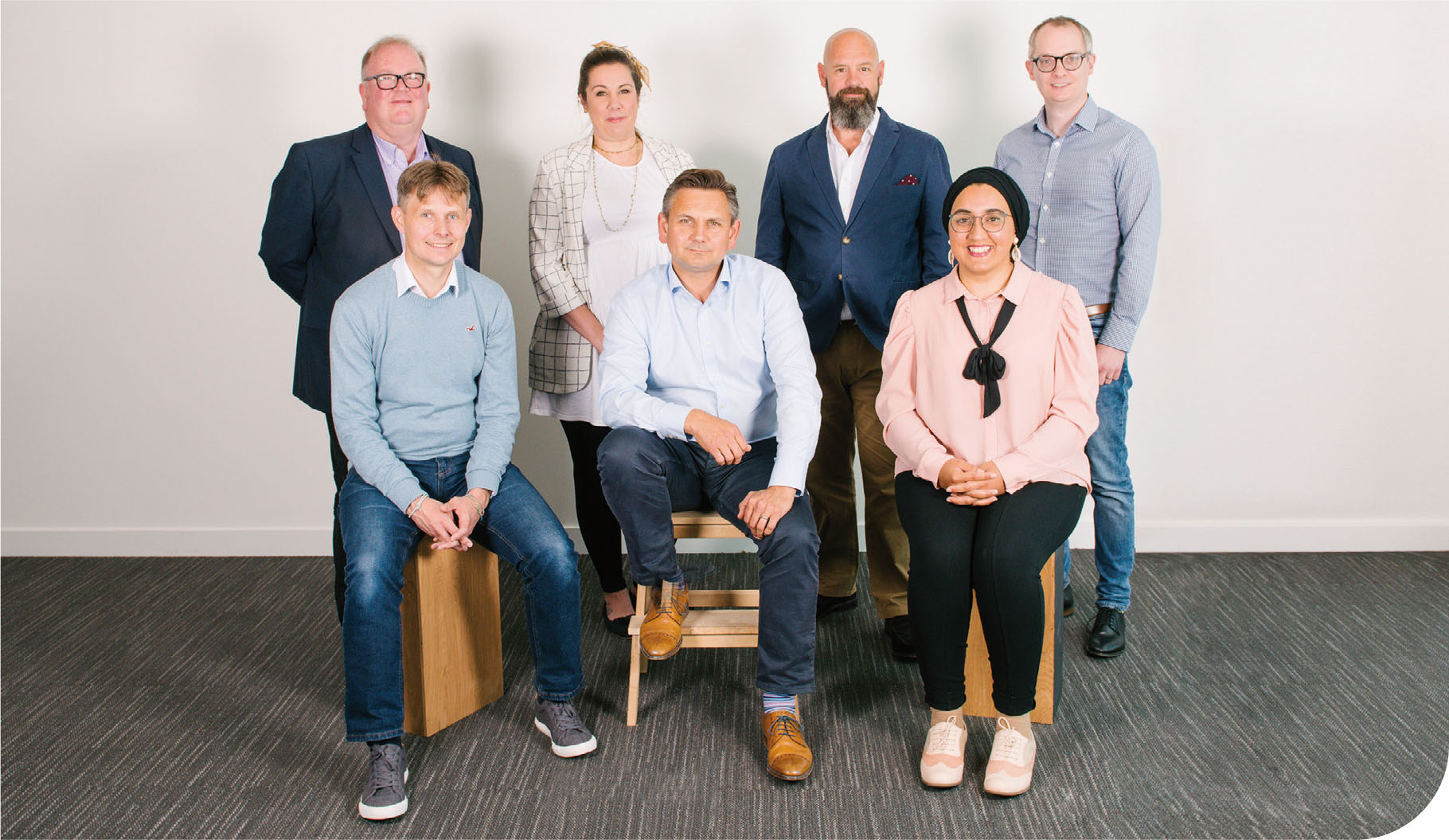A change in pitch: Conn-Selmer Europe
Glyn Môn Hughes
Wednesday, December 1, 2021
What can a leading manufacturer of musical instruments do to support young musicians? Glyn Môn Hughes speaks to Charles Bozon, Conn-Selmer Europe vice president, about changes to the company and his vision for the future of the industry

All images: Courtesy Conn-Selmer Europe
There can't be many business leaders who would look back at the UK's national lockdown through glasses tinted with even the slightest hint of rose. For Charles Bozon, vice president of EMEA operations for Conn-Selmer Europe, this is the case. For nearly three months, with unseasonably bright and beautiful weather, many businesses were in a dark place. Chill winds of uncertainty had blown many sectors into corporate depression. But Bozon set about bedding into a new premises, reassessing the company, examining everything they do, and heading for a new future.
Bozon himself has a big task to fulfil. EMEA refers to Europe, the Middle East and Africa: ‘Taking into consideration that Russia and India are included in my patch,’ he says, ‘it's easier to tell you where I do not cover. That's China, Asia Pacific and the Americas.’
He describes Conn-Selmer Europe as a relatively new company. ‘It has been running since 1984 under the name of Vincent Bach International,’ he says. ‘It is a subsidiary of the ownership company which is Conn-Selmer Inc, based in the US. Up to this point we have been working with the UK dealer network, selling them woodwind and brass products. That was up until this year, at least, when things started to change.’
The company has a large portfolio of musical instrument brands aimed at student, amateur and professional markets. In 1995, they added the Steinway Piano Company to their family and, 10 years later, acquired the G. Leblanc Company. In 2013, both Conn-Selmer and Steinway changed from public companies to private ones when Paulson and Co became the new owner and Conn-Selmer Inc became a subsidiary of Steinway Musical Instruments Inc.
Company changes
With some major changes across the Atlantic over the years, how have things changed in the European operation? ‘In February 2020, we moved to a new warehouse location in Uxbridge,’ says Bozon. ‘We separated what used to be our warehouse to a third party run by professional staff. One month before the first lockdown was good timing!’
The company had been based in on old building in Edgware and the move to West London put it in a better location for staffing that is not too far from Central London, with easy access to perimeter areas, the motorway network, and the likes of Heathrow.
‘Separating our office and warehouse gave us a better chance to focus on the business and its changes, rather than solely focusing on products that we are bringing in or selling out,’ says Bozon. ‘Since 2020, we have reassessed the employment of people, though we didn't furlough anyone during lockdown, I am pleased to say. We assessed products; we looked at everything we do and completely reassessed the business.’
Come June 2020, once the warehouse was no longer out of bounds, the company was able to clarify the direction in which it is going, resolve any outstanding issues, and clear out any dead wood in the way of old instruments that were no longer needed, or products that had been damaged or had been lying in the warehouse for too long. ‘It gave us a fresh chance to look at the business and to assess what it should be doing rather than what it has always done’, says Bozon.
Tips from across the seas
Changes also appear to be afoot in the company's approach to education. In the US, the company has a large department of education which has been running for well over 15 years. Considerable support is offered to teachers, especially those who are new to the school environment or others who are returning to teaching after a career break. There is also support from the company to enable funding for the purchase of musical instruments.
‘That's over there’, says Bozon. ‘From our side, we have been looking at what we can do here. We're looking at the challenges that teachers, schools, and education bodies in general face, particularly regarding music education. It is something that we are working on alongside the MIA – the Music Industry Association – and together we are working to produce a plan that will support music education going forward.’
Could the American experience of offering support to those wishing to purchase an instrument find its way across the Atlantic? Bozon certainly thinks so. ‘There are many different options for us, and we haven't had the opportunity to talk to the education sector enough directly and discover what the issues are,’ he confesses. ‘Is it that you have more families who cannot afford to buy a musical instrument in these difficult times? Are there areas we can support? Are there problems for teachers? Will students need a different style of instrument from what they have always had? Are there things today that are challenging that weren't challenging 18 months ago?’
‘In the past, schools have been able to purchase a lot of instruments at one time as they had a budget set aside for them, or through, as it was, the Wider Opportunities scheme. But without all those schemes being available now, how do you go about purchasing the right product for a particular group of children? What's going to help? What's going to make a true difference? And that could be to the school, the education authority, the hub, or even the parent and the child. It's an ever-changing area and we want to be involved. We need to learn from what people do in Europe and other places. I was in Amsterdam recently; support for music making there is very different. We must learn from each other and share solutions.’
Excitement in education
There are plans to move into adapted instruments for children with disabilities, with Conn-Selmer working alongside the MIA on a scheme the industry body already runs. ‘We could design an instrument which would help’, says Bozon. ‘It could be having a longer key on a clarinet or a slightly different make-up or shape. It is certainly something we would look into.’
 Conn-Selmer Europe's management team: Top row (l–r) Charlie Robertson, Rhian Williams, Scott Lashbrook, Craig Hughes Bottom row (l–r) Matt Wilkins, Charles Bozon, Ayshah Tanvir
Conn-Selmer Europe's management team: Top row (l–r) Charlie Robertson, Rhian Williams, Scott Lashbrook, Craig Hughes Bottom row (l–r) Matt Wilkins, Charles Bozon, Ayshah Tanvir
Bozon also expressed a keenness to harness all the excitement of working in the music industry. ‘Education is not just where you learn to play Beethoven's 5th symphony or a piece of jazz – there needs to be excitement in it,’ he says. ‘Does an individual need to go and see a group or a band to understand what music is all about? Absolutely. Should young musicians who have completed the education system try being a performer or a teacher to get a broader understanding of those careers? Absolutely.’
The artist development scheme
The company has an artist development scheme where they bring in young professional artists and put, in Bozon's words, ‘the kids of today in front of performers so that they can see what they can do in the future’. He continues: ‘Young people can be playing in a band one day, then they're touring, the next minute they are playing in a session, and then they're playing at home. There are so many opportunities in music that young people today haven't been able to see. We are running a programme with a young trumpet player [Lily Carassik] who is playing with one of the most recognised bands in the UK, is touring, and is teaching; she's doing so much more than just being out there as a musician.’
In order to achieve this, the company must embrace social media, an area into which they are dipping their corporate toe. ‘The more you test the water, the more you communicate,’ says Bozon. ‘We still have a lot we want to do.’

